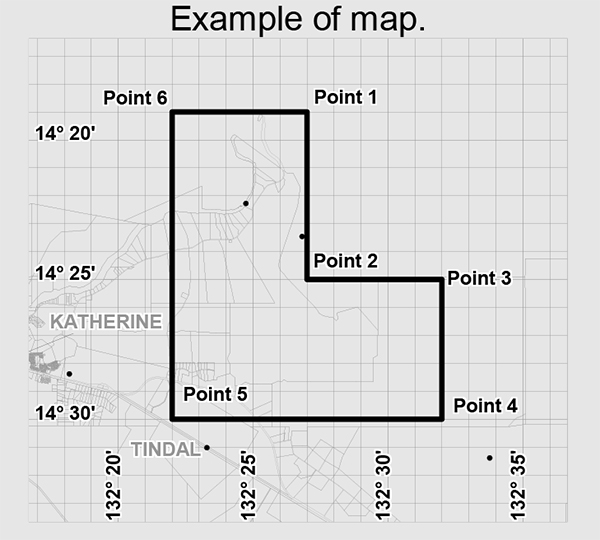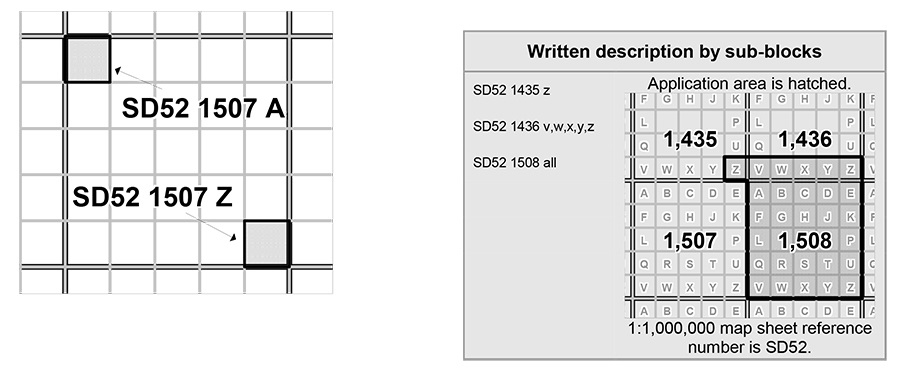Describe an area for a mineral title application
For exploration purposes the Northern Territory (NT), including Territory waters, is divided into a virtual grid.
Each square within the grid is called a graticule or graticular block.
Each block is one minute of latitude by one minute of longitude, or approximately 3.22 square kilometres.
Exploration licences and extractive mineral exploration licences are applied for in blocks.
All other title types are applied for in hectares.
You must give a detailed written description of your proposed title area in your application for a mineral title.
The various written description methods are outlined below.
Describe an exploration area in writing
You can use either of the methods explained below to describe the blocks you are applying over.
Latitude and longitude
The most popular and preferred method to describe exploration titles is to identify each corner of the application area by a coordinate pair. Coordinates must be on the GDA94 datum.
Below is an example of written description by coordinates.

Point 1. 14º 19’132º 27’
Point 2. 14º 25’132º 27’
Point 3. 14º 25132º 32’
Point 4. 14º 30’132º 32’
Point 5. 14º 30’132º 22’
Point 6. 14º 19’132º 22’
Block identification method
The block identification method is based on the 1:1,000,000 national mapping series - SD52 Darwin.
Each map is divided into five minute by five minute blocks. There are 3,456 five-minute blocks (numbered one to 3,456) on each 1:1,000,000 map sheet.
Since a graticular block is one minute by one minute, these five-minute blocks were further divided into graticular blocks called sub-blocks.
Each of these sub-blocks is identified by a letter of the alphabet, excluding the letter “i”. For example, the reference SD52 1507 A identifies sub-block A on the 1507th block of the SD52 map.

Describe other application areas
The description should be on the GDA94 datum.
You may use latitudes and longitudes or bearings and distances to describe the boundaries of the area.
All boundaries are measured in metres and all bearings true.
Below is an example of written description using bearings and distances.
Commencing from NTS310 (Mount Wells), proceed 250m on a true bearing of 90 degrees to Datum Post.
Thence 800m on a bearing of 180 degrees
Thence 400m on a bearing of 270 degrees
Thence 800m on a bearing of 360 degrees
Thence 400m on a bearing of 90 degrees back to the Datum Post.
In addition, you can email digital spatial information to titles.info@nt.gov.au with the geographical datum of the data.
Exclude certain areas
If you want to exclude certain land parcels from the application area, you can make a note to that effect at the end of the written description.
For example, please exclude all Aboriginal freehold land.
